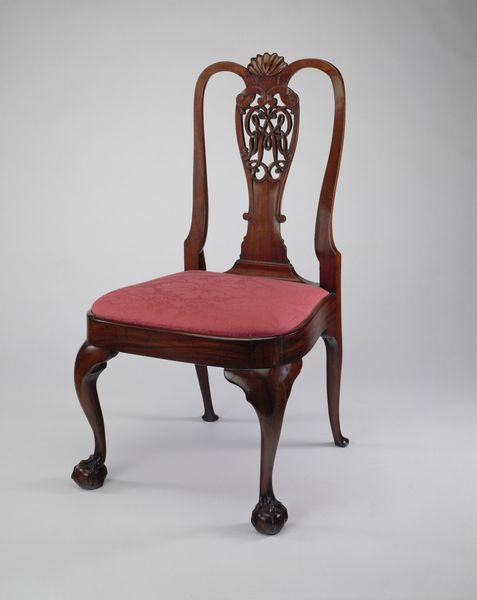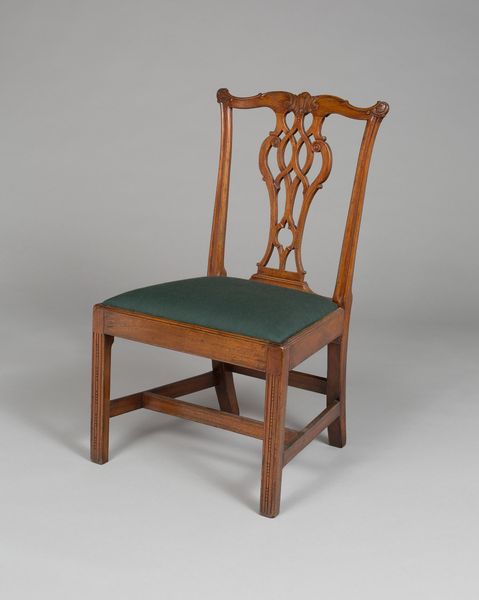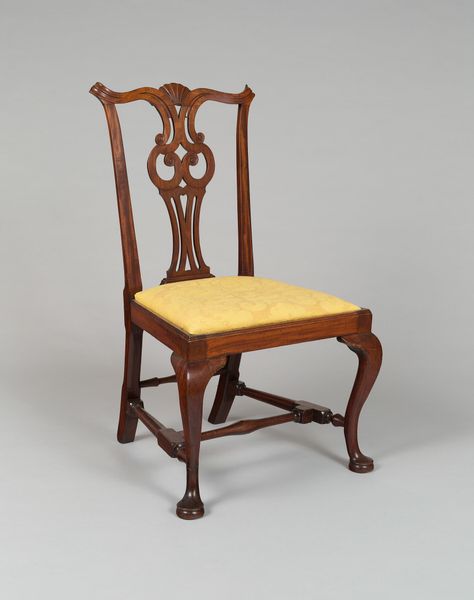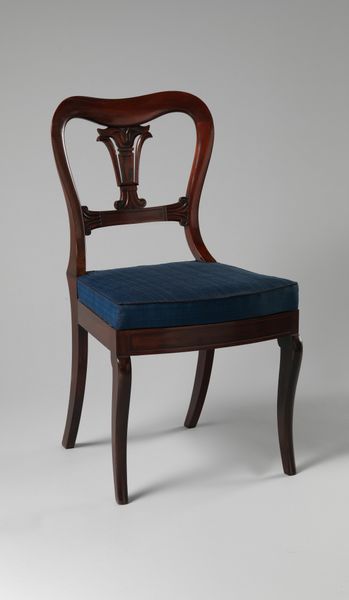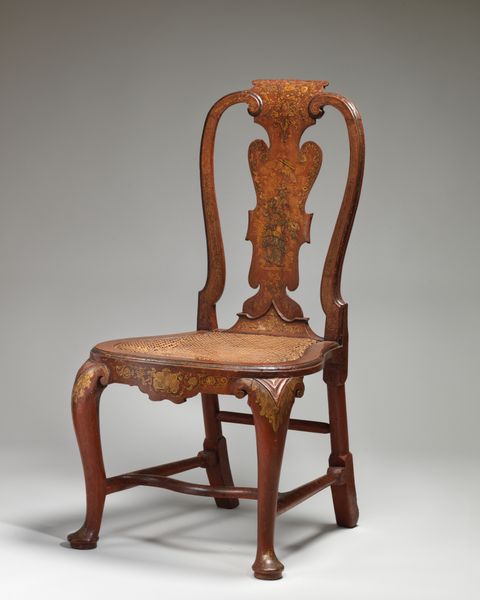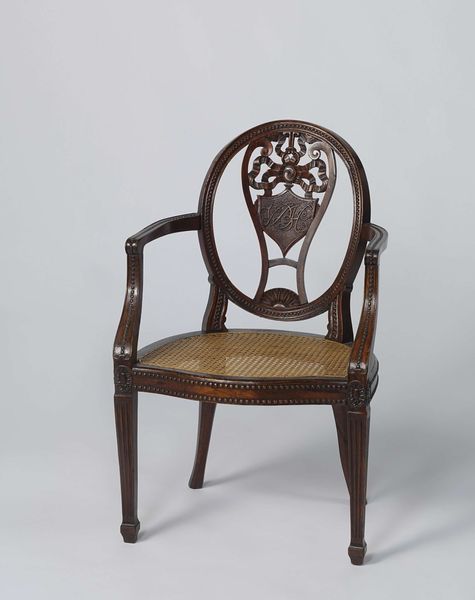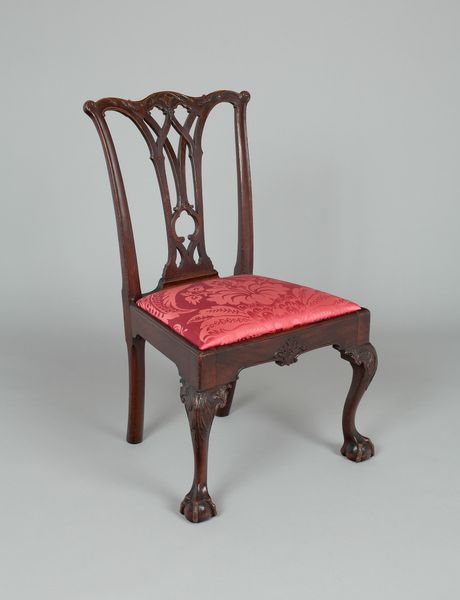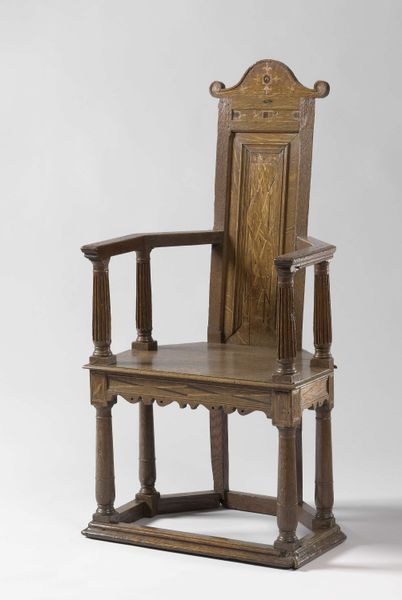
Dimensions: 91.4 × 51.8 × 40.6 cm (36 × 20 3/8 × 16 in.)
Copyright: Public Domain
Curator: We’re looking at a “Side Chair” from the late 18th century, likely made between 1755 and 1790. The anonymous artisan crafted this piece from wood, showcasing intricate carving details. You can find it right here at the Art Institute of Chicago. Editor: The first thing that strikes me is the dark, rich wood and the way the light catches the carved details. There's a real sense of luxury and refinement. And those ball-and-claw feet—impressive! Curator: Absolutely. The Baroque style is evident in the elaborate ornamentation, reflecting a period of opulence. It's fascinating to consider the social context: such a chair would have signified status, reflecting the owner’s wealth and taste. The choice of materials—the type of wood, the fabric of the seat—would have been carefully considered for its market value. Editor: And who made these? What were their working conditions? Thinking about the labor involved, the repetitive actions, the skill needed to carve such detail. Was it one artisan, or a workshop of many? Were the carvers well-compensated, or exploited labor? This wasn’t just about artistry; it was a commercial production too. Curator: Those are critical questions. Decorative arts like furniture occupied a fascinating space—craft elevated to art, often produced in workshops but ultimately reflecting the patron’s desires. It bridges the gap between everyday object and artistic statement. Also the institution that puts this on display, it becomes something available for all of us to consider today. Editor: Exactly. Seeing this chair within a museum, divorced from its original function, allows us to re-evaluate its social role and its aesthetic qualities. It reminds us how power dynamics play out in visual culture, shaping our perception of the past. I still marvel at those clawed feet, but I will consider it beyond just craftsmanship now. Curator: Right, the materiality is inseparable from its socio-historical placement. It is a tangible reminder of a particular time. Thinking through what it tells us, what can be considered as true and false about how we envision those eras, and consider ourselves presently. Editor: Thanks, that added to my appreciation for this humble and dignified chair. I hope it's more than just a chair for the listeners now too!
Comments
No comments
Be the first to comment and join the conversation on the ultimate creative platform.
